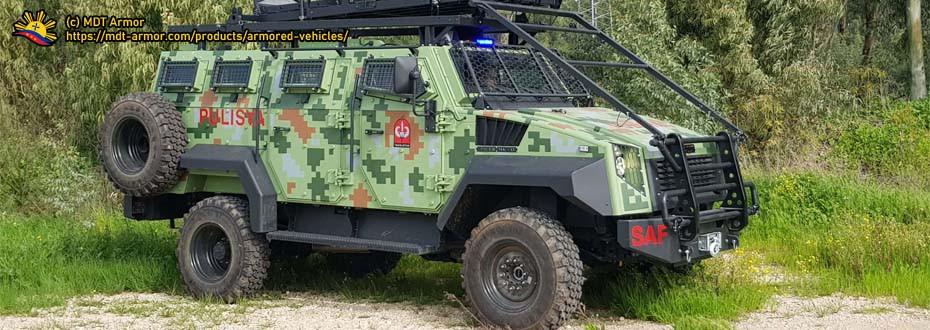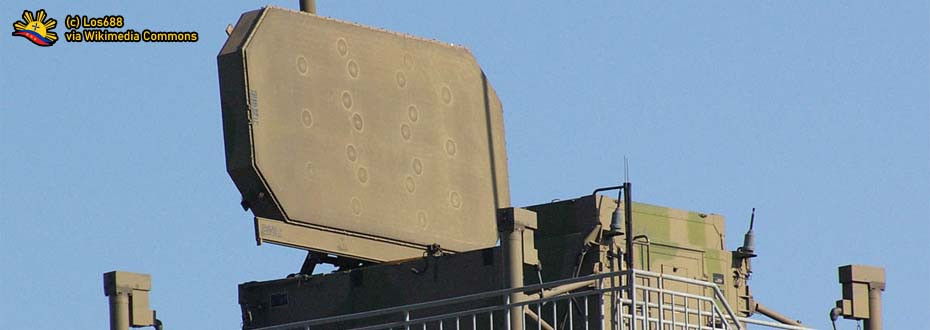The Philippine Army and the Philippine Marine Corps are set to have this platform that packs sufficient firepower that can conduct area suppression with continuous rocket barrage which inflicts damage on the enemy, both in terms of physical and psychological terms.
OVERVIEW
 |
| This is the first for the Philippines to have Multiple-Launched Rocket System. Obtained via Military-Today website. |
One of those activated is the 2nd Multiple-launched Rocket System (MLRS) Battery wherein this sub-unit within the Philippine Army will be the one who oversees the responsibility of operating incoming MLRS for the service branch to have as it may fall under the larger Artillery Regiment.
That may also come with another launched sub-unit that is the 1st Land-based Missile System (LBMS) where it will soon oversee the responsibility of operating missile platforms intended to be launched from land and to target opposition forces from both land and sea.
This signifies the ever-increasing desire of the Philippine Army to increase its capability where aside from the aforementioned units, there is also the expansion of its Army Aviation Regiment that sought its own procurement plans of acquiring light attack helicopters and MEDEVAC platforms as well as the previously-discussed details about its Self-Propelled Artillery System as well as the Medium Tank and Tank Destroyer/Fire Support Vehicle wherein both of these assets fall under the single procurement program known as the Light Tank Acquisition Project.
Shall these respective projects getting into realization, it means a lot for the service branch under the Armed Forces of the Philippines' desire to enhance its CounterInsurgency operations that better, effective ways of delivering firepower against a target are now in place.
These facilities provide a helping hand for the Government troops to get an upper hand over the situation that increases the resolve for the country's defense and security alongside the efforts being made by other military branches such as the Philippine Navy and the Philippine Air Force.
In this article, we will discuss the sets of enhanced artillery platforms that are on its way to the Philippines from South Korea where recently, most of the country's big-ticket defense hardware have originated where aside from the Jose Rizal-class Frigates and FA-50PH, this multiple-launched rocket system helps augment the country's existing artillery platforms that expounds the support needed for the ground troops to get hand-in-hand on getting the government forces to the top of a combat situation.
A PRIMER ABOUT MULTIPLE-LAUNCHED ROCKET LAUNCH SYSTEMS
 |
| USSR/Russia's Katyusha Rocket Launchers are a classic example of MLRS where it was employed during the Second World War. Image Source. |
During the Second World War, the well-known user of what will be the predecessor of a modern Multiple-Launched Rocket Systems during that time was the Soviet Union where they employ their Katyusha Rocket Launchers against the Germans who are that time are invading the vast Soviet Territory of what will be known as the Operation Barbarossa (nicknamed Operation Fritz) and eventually on their great counter-offensive all the way to the City of Berlin wherein they, along with their U.S. and British Allies at that time, have managed to defeat the German military in 1945.
The principle regarding the MLRS comes with an idea that it is artillery, but it is rocket-propelled aimed at obtaining a continuous barrage of firepower coming to the enemy at a large number as opposed to usual artillery units that have come with a howitzer cannon and ammunition that is more of an enlarged caliber cartridge that it is fired one at a time before getting reloaded and the process gets repeated along once again.
A modern MLRS is now better and more sophisticated wherein several platforms such as the M-270 Multiple-Launched Rocket System came with a fire control system and may go with guided munitions onboard the platform which increases the accuracy of the rocket's trajectory as opposed to the target that is intended to destroy.
This evolution of the Multiple-launched Rocket System is something that the Philippine Army, as well as the Marine Corps, missed throughout its operations from its respective foundation up to the present date in which the one from South Korea will render this service branch of the Armed Forces of the Philippines into having one of such platforms which helps provide necessary fire support in augmentation to the existing artillery pieces and close-air-support aircraft such as the incoming A-29 Super Tucano.
Hence, the capability provided by a Multiple-launched Rocket System will be enhanced along the way as pounding a hostile enemy position may get simplified which may help the government gain the higher ground over a situation such as the ones that took place in the country's southern part with the recently-ended Marawi Siege as an example.
DEVELOPMENT OF THE KOORYONG - South Korean deterrence and growth in the local defense industry
 |
| The rockets are fitted onboard a KM813A1 truck chassis which is one of the Philippine Army's key transport vehicles. |
Such a threat that continuously endangers South Korean sovereignty compels the country to develop its own array of weaponry wherein it comes at no surprise that its local defense industrial complex continuously grown over the decades, up to the point that they supply the Philippine Armed Forces with an array of military weaponry ranging from the Korean Aerospace Industries KA-50PH which itself as part of the T-50 family of jets, Hyundai Heavy Industries' Jose Rizal-class Frigates which is derived from the HDF-2600 design which in itself is also a derivative from the South Korean Incheon-class Frigates, and the license-built Korean Amphibious Assault Vehicles (KAAV-7) which is now being utilized by the Philippine Marine Corps.
Speaking of North Korean threat and the boom in South Korean Industry's Research and Development complex, let it be known that the former obtains a handful of Multiple-Launched Rocket System in a form of BM-21 Grad which it was obtained from the Soviet Union which may be considered as a direct successor for the Katyusha Rocket Launchers of the Second World War.
The North Korean BM-21 Grad serves as a threat against the South Koreans as well as an opportunity and inspiration to provide themselves their own version of such Multiple-Launched Rocket System which is considered a precedent to the development of a South Korean MLRS which is now about to provide the Philippine Army and Marine Corps its own firepower that will augment other components in the military that will ensure the completion of an objective against an enemy that endangers the safety, security, and welfare of the nation and its citizenry.
The development of the K-136 Kooryong started in 1973 and it took almost a decade until the first unit for such a platform got deployed in 1981 wherein it served the South Korean armed forces for many years, helping their own defense industry to flourish and to keep their rouge neighbor in the north in check, wherein the constant threats thrown against them serves as an inspiration to improve their defense weaponry in such a way that an improved version of the K-136 which is the K-136A1 was put in service on its deployment in the late 80s.
This helped the South Koreans improve their expertise in creating, developing, and producing an MLRS or Multiple-Launched Rocket System wherein they are now starting to replace these older K-136 Kooryongs with the newer K-239 Chunmoo MLRS with newer features integrated and experience on weapons development applied on their own worth, paving the way for these older MLRS platforms to be provided in countries that need such a platform such as the Armed Forces of the Philippines, through the Army and the Marine Corps.
SPECIFICATIONS
 |
| The K-136 Kooryong MRLS' Specifications. Click the table to enlarge. Image Source. |
It comes with 36 tubes that render the capability of this Multiple-Launched Rocket System to fire a full salvo of massive delivery of firepower against the target within 23 kilometers range, giving it additional support for the ground troops on its objective that requires such scale of destruction which assures that the target is obliterated and the area is flattened for the ground troops to move forward on its objective and finish the remaining pockets of the enemy in its position.
Now with the vehicle that the Korean Armed Forces utilized for its K-136 Kooryong that the Philippine Army sees commonality - the KM809A1 6x6 truck chassis wherein it was derived from the United States-developed M-809 heavy tactical trucks that it obtains wherein it will not be seen as much of a concern in terms of commonality and logistics chain as its integration within the Armed Forces will be smooth in terms of operating and maintaining the truck chassis that carries the K-136 Kooryong MLRS.
The M-809 trucks that the Philippine Army obtains usually comes as a cargo truck type which comes with a 250hp engine with a maximum speed of 84 km/h and a range of approximately 800 kilometers which is seen as greater than the Korean variant provided that comes with a 236hp engine with a maximum speed of 80 km/h and a range of 550 kilometers.
Nevertheless, it is with this type of vehicle that the K-136 Kooryong MLRS comes wherein it comes with a rocket launcher and components such as at fire control in a manner that with maneuverability comes the accuracy and efficiency required that will effectively achieve the purpose of these platforms at the expense of lesser munitions required to get the job done.
Its munition comes with two variants - the K30 standard rocket and the extended K33 rocket, of which it only comes as the only ammunition fitted onboard the K-136 wherein it needs 10 minutes for each platform to reload after a salvo of rockets was fired against the enemy - and such operation was done by maneuvering the launchers from its attack position to a safe place while getting it armed with a supply companion coming in a form of another KM-109 truck that has 72 rockets for reloading.
Like the munition, the K-136 Kooryong MLRS in itself comes at two variants - the original K-136 and the improved K-136A1 with the latter having the chance to be the one that will be supplied to both the Philippine Army and Marine Corps wherein it may come with improved materials that can be found on its tubes in the form of stainless steel.
TO THE INVENTORY OF THE PHILIPPINE ARMED FORCES
 |
| Its low acquisition cost prompts South Korea to produce these platforms rather than sophistication that is seen on the K-239 Chunmoo successor. |
Its feature of mobility especially of its composition as an artillery platform comes parallel with another Philippine Army project on the block that also comes with such mobility, only that it is fitted with a howitzer cannon as opposed to the MLRS attribute of the K-136 Kooryong which both obtains the same function as towed artillery although they vary in terms of firepower aside from the aforementioned feature.
Such artillery we refer there is the ATMOS 2000 Self-Propelled Howitzer is being produced by Elbit Systems through its artilleries subsidiary Soltam Systems which is utilized currently by countries such as the Kingdom of Thailand and the African Nation of Rwanda where it is being considered by the Army in which just like the K-136 Kooryong is something that helps improve the efficiency of having it deployed from one place to another without taking another vehicle to tow it up such in the case of Soltam M-71 155 meters towed howitzers that were delivered to the Philippines.
Apparently, its low acquisition cost and perhaps its low operational cost is something that these assets will help the Armed Forces attain its objective without any logistical concerns, given the commonality that its launch vehicle has with the ones such as the M-809 that the Philippine Armed Forces obtains wherein while it is losing relevance in an ever-changing landscape of the battlefield that is being fought by systems warfare of which the Chinese seek to wage it up, the continuous infestation of numerous communist and radical terrorist elements in the country makes this platform more relevant as it will showcase the government's resolve to enforce its power to these said enemies of the state which inflicts more harm than good as they hamper the country's overall peace, security, and development as citizens of the nation.
The platform's manual process from the assembly of the munitions in the field down to gun-laying which pinpoints the aim of the Multiple-Launched Rocket System to the target, these set of skills are something that will help the Armed Forces of the Philippines improve their capability to operate this kind of artillery piece which may go handy whether they consider the plans to purchase a sophisticated MLRS later on which in it goes the increased firepower that the government seeks that inflict devastating damage against the enemy.
With age, these assets are getting more maintenance-intensive which at the standpoint of the Philippine Armed Forces, it may be seen as a potential non-feasible military asset to operate, although the decision to acquire and obtain them goes with the idea that its usefulness weighs along as the maintenance culture that came along with that decision shows significance on the improvements therein and the assessments that these platforms are up for the needs of the military for its desire of defense.
These things play to the factor that helps take the decision for the key officials in the Philippine Army as well as the Marine Corps in which the K-136 Kooryong MLRS is a platform that improves the overall firepower package that the organization seeks as part of its desired Modernization plan as getting formidable comes with the desires of providing the tools needed to protect and defend the nation and its citizens against numerous threats, whether it may be internal or external.
A GLIMPSE OVER THE PHILIPPINE-SOUTH KOREAN RELATIONS
 |
| One of the tokens of the Philippine-South Korean defense relations is the Jose Rizal-class Frigates produced by Hyundai Heavy Industries. |
Recently, with the Revised Armed Forces of the Philippines in the form of Republic Act 10349 rolls across the timeline from its inception in 2013 to the date that this article published, South Korea provides a significant amount of military equipment for each branch of the military to have wherein these assets are continuously operating and serving the country's primary defenders as these tools are an element for constant upholding of the organization's duties and responsibilities.
South Korean defense industries like Hanwha Systems, Korean Aerospace Industries or KAI, LIG Nex1, KIA, and Hyundai Heavy Industries have respective projects with the Philippine Armed Forces wherein they provided their respective military products, tools, and technologies that help the country's military defense posture improved a bit in which new capabilities are being introduced along the way as they present their equipment that will mean much for the defense capabilities of the nation as a whole.
The product they offered that managed to be part of the inventory of the Armed Forces of the Philippines includes the KAI FA-50PH which comes with a single squadron (12 units) purchased, Hyundai Heavy Industries' Jose Rizal-class Missile-Guided Frigates which comes with two ships - the BRP Jose Rizal FF-150 and the BRP Antonio Luna FF-151, Hanwha Systems' Naval Shield Integrated Combat Management System or ICMS which are fitted on the aforementioned Jose Rizal-class Frigates and soon to be fitted on the Del Pilar-class Offshore Patrol Vessels, munitions such as the Blue Shark torpedoes and SSM-700K "Haesong" Anti-ship missiles which are both made by LIG Nex1, and the Hanwha System's Korean Amphibious Assault Vessels or KAAV-7s that the Philippine Marine Corps utilized on its amphibious operations.
These assets are several of the military assets that the South Koreans supplanted to the Armed Forces of the Philippines alongside the K-136 Kooryong MLRS. Add to the mix are the ones donated by the South Korean government such as the Pohang-class Corvette BRP Conrado Yap PS-39 which is currently the most capable warship within the Philippine Navy to date, with the prospect of more ships of such type may be offered or considered for years to come as the Navy follows the rule of thirds in obtaining vessels in its fleet for continuous flow of operations without disruptions from maintenance and repairs in any of such ships in the fleet.
Further adding things up are some of the candidate military products that the South Korean defense industries pushed wherein there are lesser chances for these assets to be considered by the Philippine Armed Forces such as the Hanwha K21-105 Medium Tank for the Philippine Army's Light Tank Acquisition Project - tracked and the KUH-1 Surion Combat Utility Helicopters by KAI which was lost in favor of the S-70i Black Hawk Helicopters to be produced by Sikorsky's subsidiary in Poland.
The scale of these offers and procurements which include the K-136 Kooryong MLRS is something that may serve as an ever-growing tie between the Philippines and South Korea in terms of transactions that are related to defense with the former aspires to have an improved Armed Forces and the latter getting its defense industry flourish and grow further to its full potential.
TO SURMISE THINGS UP
The Philippine Army and Marine Corps will soon be having additional artillery pieces that will augment their respective existing towed artillery wherein this one provides a salvo of continuous bombardment of its munitions against a target which overwhelms its capability to defend up in a form of saturation attack.
Procuring the K-136 Kooryong serves as an addition on the list of the South Korean-made products that have been provided for the Armed Forces of the Philippines that enhances its own desire for defense wherein these platforms may help support ground troops in the case of another devastating conflict in the future where it may go needed against harmful elements that pose threat in the country.
With this, it may go hand in hand with other units within the Philippine Army such as the M-113 Armored Personnel Carriers with some fitted with Elbit ORCWS as well as from other military branches like the Close Air Support Aircraft of the Philippine Air Force such as the OV-10 and the soon-to-deliver A-29 Super Tucano wherein these assets puts the government forces at the upper hand against the communist bandits and terrorists.
Obtaining these Multiple-Launched Rocket Systems are a first for the Armed Forces of the Philippines to have, wherein they may gain additional skillsets and experience of obtaining such assets along the way wherein it may go handy as they will procure more sophisticated ones later on as other Southeast Asian Nations like Cambodia and Myanmar obtain such MLRS platforms like the BM-21 Grad as supplanted by the Soviet Union during the Cold War.
To take note, it was also with the BM-21 Grad which is also obtained by North Korea that the South Koreans prompted the development of the K-136 Kooryong as its capability may help them match the array of MLRS assets that their rouge neighbor in the North obtains in terms of firepower capabilities for saturation attack between both sides.
As it gets delivered to the country, it will be interesting to see these platforms eventually entering active service within the Philippine Armed Forces as its performance, later on, may help suffice the need of the organization to enhance its capability which will ensure its efficiency in doing its duties and responsibilities in defending the nation.
The continuous effort of Modernizing the whole Armed Forces of the Philippines is considered an ever-increasing source of national pride that the citizenry is seeking for a capable military that has a sufficient array of assets to provide the necessary minimum credible defense posture required for the assurance of securing and defending the country's national sovereignty and integrity as a whole.
























%20Launch%20-%20PDA.jpg)

